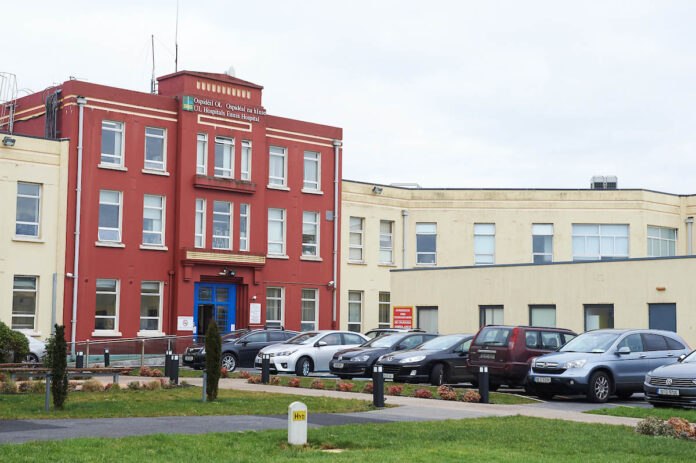AN inspection of the Acute Psychiatric Unit at Ennis Hospital by the Mental Health Commission (MHC) found a ‘critical risk’ non-compliance.
The centre, which provides in-patient mental health care to residents of North Tipperary and County Clare, achieved an overall compliance rate of 71%, a 7% increase on the 64% it received in 2020. However, the inspection identified one critical risk and six high-risk non-compliances, with the critical risk relating to risk management procedures.
The Ennis inspection report was one of three published by the MHC along with mental health centres in Drogheda and Offaly. Across all three the MHC found one critical and sixteen high-risk non-compliances
“All of the centres inspected were non-compliant with the regulation relating to premises,” said the Inspector of Mental Health Services, Dr Susan Finnerty.
“We see issues with buildings not being maintained, bathrooms not being ventilated and the lack of sufficient privacy for patients. These environments are not conducive to the treatment and recovery of people with mental illness.”
The Chief Executive of the Mental Health Commission, John Farrelly, commented on the sheer number of high and critical risks identified.
“It is quite shocking that across three centres you would see this number of serious issues. Frankly, it is unacceptable, and we are seeking urgent improvements from the service providers, some changes have already been made in terms of patient safety and we will be monitoring these plans going forward.”
According to the inspection report for the Acute Psychiatric Unit at Ennis Hospital not all health and safety risks were adequately identified, assessed, and treated within the approved centre.
Several issues were observed by the inspection team concerning the functionality of the fire doors. On seven occasions, fire doors were noted to be held in an open position through the use of door wedges or other obstructions. The door closer mechanism was broken on one fire door and absent on another.
Two sets of the double fire doors on the corridors were noted to have gaps above the recommended size between the meeting of the doors leaves.
After the inspection, the MHC agreed with the centre that daily walkarounds would take place to identify safety risks.
The regulation regarding premises was rated a high risk. The physical structure and the overall centre environment were not maintained with due regard to the safety of residents. Ligature anchor points were not minimised to the lowest practicable level, based on risk assessment.
At the time of the inspection there were high risk ligature points in resident areas throughout the centre. The centre was clean, hygienic, and free from offensive odours, but it was not maintained in a good decorative state of repair – doors were worn, marked, and damaged and needed painting.
Floors were marked and damaged and needed to be replaced. The layout and furnishings of the centre were not conducive to resident privacy and dignity.
Where residents shared a room, the bed screening was not always adequate, which risked compromising resident privacy. In the two-bedded room on the high observation unit, there was no privacy screening around either bed.
In another two-bedded room on the general acute unit, there were screening curtains in place, however, these curtains were not fitted to adequately function as privacy curtains.
The curtains did not surround either bed completely. Privacy in the centre was rated as a high risk along with therapeutic programmes, staffing, general health and the rules governing the use of seclusion.
The centre was found to be compliant in a number of areas which included: food and nutrition, food safety, residents’ personal property and possessions, recreational activities, visits, communication and health and safety.
The report also noted that the centre was “proactive” in managing issues concerning the Covid-19 pandemic. There was a designated isolation area with separate clothing changing facilities for staff within the approved centre that could be utilised in the event of a Covid-19 outbreak. Infection Prevention Control processes were clearly outlined.
The Acute Psychiatric Unit at Ennis Hospital is registered to accommodate 39 residents and consists of three separate subunits; including a 30-bed general acute unit, a four-bed high observation unit, and a five bed psychiatry of later life unit.

